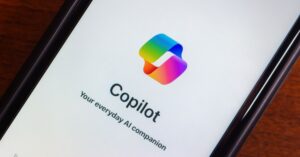5G is the next step in the evolution of network technology. It has faster network speeds, lower latency and more simultaneous device connections. 5G specifications state that users should have a download speed of at least 100 Mbps, especially because it is the fastest minimum NBN speed. Download speeds for individual users can be expected to be at least 20 Mbps. As with other networks, speed is dependent on the network’s configuration, the number of users connected to that network, and what devices are connected to it.
Latency can be defined as the time information travels from your device to the general internet and back to your device again. 4G networks usually have a latency of roughly 60 milliseconds; 5G on the other hand, can be as low as 1 millisecond. Such capacity changes the game for many businesses and users.
5G in Australia
Australia currently has three major mobile network providers: Vodafone, Optus, and Telstra. The latter two are already implementing 5G networks, while Vodafone is set to do so in 2020. However, coverage is still limited across devices. There is still no service and infrastructure in many areas.
One other mobile network provider, the MVNO or Mobile Virtual Network Operator, purchases access to the three networks to pass on to its subscribers. Whether MVNO can pass on 5G to them will depend on when the networks will allow it access. For 4G, Optus provided access after only a week of its 4G network launch, while Telstra took four years before doing so.
5G and Users
The ability to transmit more data faster and with significantly less latency has great potential for industries, business IT, and users. Online activities that need quick responses, such self-driving cars and gaming and virtual reality will all benefit from it.
For example, in self-driving cars, each millisecond of decreased latency and additional speed can mean the difference between a safe ride and an accident. Remote surgery may enable a surgeon far removed from a patient to operate on them with a robot and a virtual reality headset. More simultaneous connections can facilitate further developments in industries concerned with connected machinery, the Internet of Things, autonomous cars, and more. Its applications are potentially unlimited. 5G’s faster speeds and higher quality video streaming and browsing can give rise to applications not yet presently conceived. Just as 4G made real-time video streaming and instant video sharing possible, so more new technologies will also arise. 5G also makes it possible to serve more users and handle more data, improving service by Wyntec, IT Support Brisbane, and IT Service Brisbane for an ever-growing connected population.
5G and NBN
Nonetheless, 5G cannot yet replace 4G or NBN. The mere possibility of a 20 Gbps speed is already revolutionary. However, current 5G coverage is still severely limited and NBN is also cheaper. 4g, 3G and NBN are expected to exist alongside 5G. Australian telcos estimate 3G will still be around at least until 2020.




